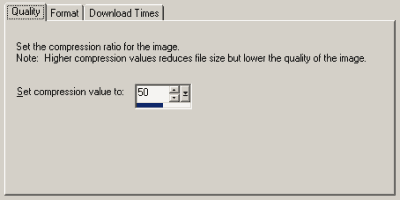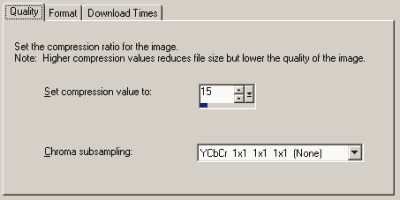For a while back in March I had changed the look of my main blog page so that it showed entries from my Quick Reviews blog interleaved with my main blog entries, in the appropriate chronological order. Frank suggested that I should put together a tutorial on how to do this with Movable Type, so here it is.
Paint Shop Pro 8 watercolour effect
The more I play with Paint Shop Pro 8, the more I like it. While I was messing around with our Rome holiday photos, I discovered that the “One Step Photo Fix” action can do far more than just tidy up photos. The image below is what happens when you run the One Step Photo Fix several times on the same image: it applies a kind of watercolour effect. (Click on the image for a bigger version to see it more clearly.)
The exact sequence of actions I applied to the original image was:
- Soften
- One Step Photo Fix x 4
- Soften
- One Step Photo Fix x 4
- Soften
- One Step Photo Fix x 2
The “soften” steps are necessary because the One Step Photo Fix sharpens up edges in the image, and unless you give it a bit of a blur every now and then, you get a lot of pixellation artefacts at the boundaries of blocks of colour.
The cross-eyed method of comparing lists
Am I the only one who uses the cross-eyed method of comparing lists? I mentioned this to someone at work today and they looked at me like I was a space alien.
The way it works is this: you take the two lists you want to compare, and line them up side-by-side. You can do this with sheets of paper, or on-screen with columns of data in spreadsheets.
Next, slowly cross your eyes so that the two lists are superimposed. The hardest part of this is crossing your eyes and keeping them focussed at the same time. But if you can get the two lists exactly overlapping in your cross-eyed view, it becomes very easy to spot any differences. Items that are identical will overlap precisely, and will look normal. But items that are different will never properly line up, and so will look strange.
Chroma sub-sampling and JPG image quality in Paint Shop Pro 8
If you’re using the new Paint Shop Pro version 8, watch out for some new settings when you’re saving JPG images. In Paint Shop Pro 7 you could only select the compression value for JPG images:

In PSP 8, you can now also select what level of “Chroma subsampling” you want:

The default setting is for some Chroma subsampling (2×2 1×1 1×1) to be used. Be careful with this, though. In particular after using the “One Step Photo Fix” script, the default setting can result in noticeably poorer images at the same compression setting than the “none” value (1×1 1×1 1×1).
For an explanation of why this is the case, see the page Chroma Subsampling in JPG Compression. Basically, although all programs read and display JPG images in the same way, there are multiple algorithms for generating them. Some algorithms work better then others, and they also tend to work differently on different types of image.
Generally I’m finding that saving photos with a higher compression setting but no chroma subsampling makes them look better than a lower compression with the default subsampling. But if you’re picky about image quality, it’s worth tuning the settings to find the finest settings for each picture you save.
Rome Photos
I finally got round to doing all of the photos from our Rome trip this year. Here are some nice ones! (There are more over in Alex’s pages, but your have to register to see them. Please feel free to register, but send me an email if I’m not likely to recognize your name or email address. We get a surprisingly large number of weirdos trying to register who get offended when we delete their logins because we don’t know who they are.)
Diet, end of week 8
Well, the diet kind of stalled at the end of week 5 (18 May). After we’d brought Alex back from the hospital that evening, we all tucked in to an enormous chinese takeaway, and things went downhill from there. I’d known that the holiday in Rome was going to be a diet killer, but I was also hoping that the additional exercise we’d be getting (walking everywhere) would keep it down to the weight gain down to a manageable level.
In the end it wasn’t too bad. I was back up to about 71.5kg immediately after Rome, but I’m down to 70kg now. Which is great. There are trousers I can wear again for the first time in two years. On the other hand, I’ve had to give away the trousers I bought in Boston in February, because I could pull them down over my hips without unbuttoning or unzipping them. 7kg makes a big difference.
My target for the current diet is still 67kg. My long-term aim is to maintain my weight between 67 and 70kg. So right now I’m at the top end of where I want to be. That feels about right. I’m content with my weight right now, but I know I’d be even happier with just a few kilos less.
The diet doesn’t feel like a diet any more, though. After eight weeks it has turned into a realisation that there is a certain amount and type of food I can eat that is compatible with being a reasonable weight. It feels like I have adopted new eating habits that (hopefully) mean my body is going to find a stable equilibrium somewhere between 67 and 70kg. And, happily, these eating habits still include the occasional bar of chocolate, and a moderate intake of pizza. Yay!




